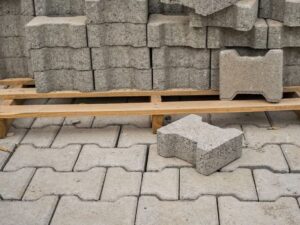 Brick pavers have a distinct advantage over other types of paving, such as concrete or asphalt, as no mark or trail is left behind after repair work. Unlike other types of paving, where visible repairs can detract from the overall aesthetic appeal, brick pavers maintain their visual appeal, even after restoration or repair work. However, it is crucial to understand that regular maintenance is still essential to maintain their longevity and ensure they look their best.
Brick pavers have a distinct advantage over other types of paving, such as concrete or asphalt, as no mark or trail is left behind after repair work. Unlike other types of paving, where visible repairs can detract from the overall aesthetic appeal, brick pavers maintain their visual appeal, even after restoration or repair work. However, it is crucial to understand that regular maintenance is still essential to maintain their longevity and ensure they look their best.
As much as we may wish for things to last forever, everything eventually wears down and requires maintenance or repair. If you have a brick paver installation that is over five years old, it is common for them to develop low areas due to wear and traffic. Poor preparation of soil, base, or compaction prior to installation can exacerbate the problem, making subbase preparation and compaction vital to prevent settling or sinking.
In northern hemisphere locations where there are frequent freezing and thawing cycles, it is even more common for brick pavers to develop low areas that can collect water, leading to further expansion and higher repair costs if left untreated.
Restoration or repair work is needed in the majority of brick paver projects, either partially or entirely. However, the good news is that most of these projects can be successfully rebuilt and re-leveled using existing materials, which reduces costs and results in pavers that look like they were newly installed.
In contrast, repairing concrete or asphalt always leaves behind a visible mark or trail, which is not the case with brick pavers. This feature adds to their aesthetic appeal, but maintenance is still necessary to preserve their durability and visual appearance.
Picture Credit: Freepik
